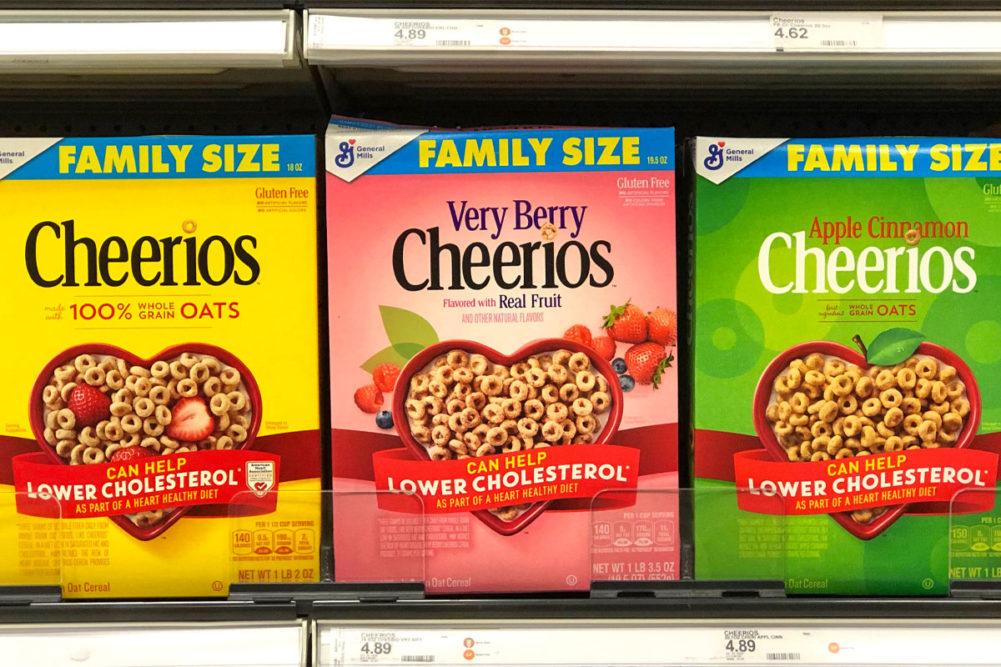MINNEAPOLIS — Three words sum up General Mills’ first-quarter performance — better than expected. In fact, the performance was so good it prompted management to raise the company’s outlook for the rest of fiscal 2023.
Driving the positive performance were pricing actions taken the previous year that allowed General Mills to keep pace with inflation.
“We drove 10% organic net sales growth in the quarter, fueled by strong net price realization in response to significant levels of input cost inflation,” said Jeffrey L. Harmening, chairman and chief executive officer, in prepared remarks published Sept. 21. “On the bottom line, adjusted operating profit was up 8% and adjusted diluted EPS (earnings per share) was up 13%, each in constant currency.”
He added that inflation and reduced consumer spending power led to an increase in at-home eating and other value-seeking behaviors that benefited General Mills.
“We think elevated demand for food at home was one reason we saw lower-than -expected volume elasticities in Q1, particularly in North America Retail,” Mr. Harmening said. “We expect elasticities will increase over the remainder of the year, though remain below historic levels.”
General Mills’ net income for the quarter ended Aug. 22 rose 31% to $820 million, equal to $1.37 per share on the common stock. The company earned $627 million, equal to $1.03 per share, during the same quarter of the previous year.
Quarterly sales rose 4% to $4.7 billion.
Kofi Bruce, chief financial officer, noted the year-over-year comparison was affected by the acquisition of TNT Crust and a pet treats business as well as the divestiture of General Mills’ Helper and Suddenly Salad brands.
“Additionally, our first-quarter results included the impact of a recent voluntary recall on certain international Häagen-Dazs ice cream products, which was a headwind to net sales and operating profit for our International segment,” he said. “We expect the majority of the recall impact has been captured in the first quarter, with a smaller amount expected to impact Q2.”
General Mills’ North America Retail segment sales rose 10% to $3 billion during the quarter. Pricing and mix offset lower pound volume and a one-point headwind from the Helper and Suddenly Salad divestiture, according to the company. Segment operating profit was $778 million, up 20% when compared with the year prior.
“We continued to compete effectively in the quarter, with roughly two-thirds of our US Retail business holding or growing share,” Mr. Bruce said.
The company’s Pet Segment unit saw sales rise 19% to $580 million during the quarter with the pet treats acquisition resulting in a 5-point benefit, the company said. Pet Segment operating profit was up 7% to $123 million.
Holding back the Pet segment during the quarter were manufacturing capacity constraints.
“While demand for Blue Buffalo remains strong, we continue to be challenged by capacity constraints on the business, which is limiting our ability to deliver competitive customer service and drive further volume growth,” Mr. Bruce said. “We gained share in wet pet food in the first quarter, but capacity limitations did not allow us to keep pace with the category in dry food and treats.
“We anticipate bringing on additional co-packer capacity on the treats business in the back half of fiscal 2023. For dry food, we continue to work to increase the output of our current lines, and we plan to add significant additional capacity to our internal network starting in fiscal 2024.”
North America Foodservice sales rose 21% to $496 million during the quarter. Segment operating profit was down 25% to $54 million, driven by higher input costs.
“… Price/mix on the business outside of bakery flour did not keep pace with roughly 20% input cost inflation for the segment in Q1. We expect recent incremental SRM (strategic risk management) actions will help address this gap and improve our profit performance in the remainder of the year.”
First-quarter sales for the company’s International segment were down 30% to $652 million. Lower pound volume combined with divestitures of some yogurt and dough businesses affected results. Segment operating profit of $35 million was down 43%.
Both Mr. Harmening and Mr. Bruce repeatedly said market conditions remain volatile, but that the company chose to raise its full-year outlook, because management now expects lower volume elasticities and better volume performance during the rest of the year. Additionally, the company plans to accelerate investments in brand building and other growth-driving activities and expects the impact of the ice cream recall will be lower than originally expected.
“We now expect organic net sales to increase 6% to 7%, constant-currency adjusted operating profit growth to range between flat and up 3%, and constant-currency adjusted diluted earnings per share to be up 2% to 5%,” Mr. Bruce said.





